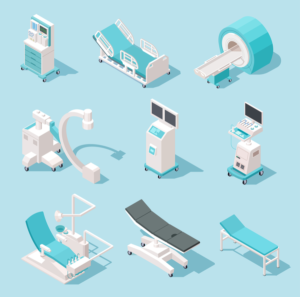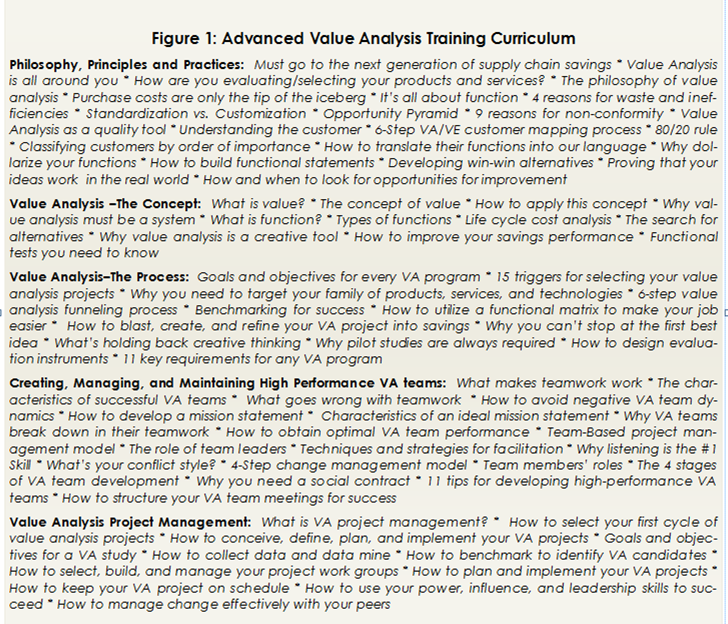Mike Maguire, Senior Vice President and Chief Supply Chain Officer at PartsSource
The U.S. healthcare system is the most costly across the globe. Seeking to cut waste from the system, American healthcare organizations are under ever-increasing pressure to optimize their performance and drive value to their bottom lines.
As a result, hospitals are laser focused on three goals:
- Improving the quality of healthcare
- Reducing the cost of healthcare
- Increasing operational efficiencies
One of the most critical areas of focus is Medical-Surgical spend, which is largely driven by a health system’s formulary, the product of agreements between Clinicians and Supply Chain. To contain costs, and ensure standardization and quality, clinical preference items are increasingly sourced through a value analysis process. The model has worked well. Yet, the value analysis process could also be used to address the cost, quality, and efficiency of purchased services in an often overlooked area of the health system: Clinical Engineering.
Managing cost, quality, and efficiencies comes with numerous challenges in supply chain, and specifically within Clinical Engineering departments. Clinical Engineering has a mission critical role within the health system to ensure that the equipment that supports patient care is available (“uptime”) and working optimally per the manufacturer’s specifications. Their work includes both regularly scheduled maintenance as well as unplanned repair work. The procurement of a wide variety of parts supports their mission but is often handled in what Procurement would call an “unmanaged” fashion. To streamline the process, what’s needed is a simplified, collaborative supply chain process that delivers on-demand products and service to clinical engineering. Such a process is critical to the high level of efficiency required for the survival and health of large organizations, and to ensure that medical equipment is ready when and where patients need it. Yet, large-scale quality issues, service deficiencies, and increased costs are among a plethora of factors that continue to negatively impact profits.
How can supply chain apply value analysis for purchased services to improve the efficiency of clinical engineering? The answer may be found in some of the nation’s high-quality leaders.
Organizations such as the Mayo Clinic, Cincinnati Children’s Hospital and HCA have all found a viable solution for evaluating quality vendors and products and applying a process to standardize the workflow and costs of clinical engineering purchases. Results include efficiency through consolidation, and significant cost savings to help reduce the total cost of ownership of medical equipment.
Dartmouth-Hitchcock
Dartmouth-Hitchcock Health (Dartmouth–Hitchcock), a leading nonprofit academic health system serving a population of 1.9 million in New England, implemented this approach for their clinical engineering department.
“I was in need of a parts procurement solution that allowed me to leverage my team’s time in a positive manner, while at the same time provided visibility to everything that was going on with ordering parts,” said Dartmouth-Hitchcock Director of Clinical Engineering, Jon Kocurek. “As a manager, I wanted to start finding areas of low-hanging fruit and doing a better job of saving my organization valuable resources.”
The challenge for Dartmouth-Hitchcock was that limited access and the inability to get historical spend data meant they had to rely on a manual record keeping process. It was vital to their strategy to have the right technology in-house to store purchasing data for future analytics and reporting.
“Not only would we receive parts that were dead on arrival, but we would also receive parts that worked okay on installation, and then failed two weeks later. In the event of a failure, my team would have no way of really tracking warranty terms on parts. Many times, I would find we purchased a new part only to realize later that it should have been covered under warranty by the manufacturer. Additionally, I had no way of knowing or seeing metrics regarding lead or backorder times from different manufactures and vendors. The inability to truly understand these performance indicators was a substantial limiting factor in understanding how I could make my team as efficient as possible,” said Kocurek.
So Dartmouth-Hitchcock introduced a resource management program using a cloud-based software platform to standardize process for order entry, management and reconciliation from multiple OEMs and suppliers. Visibility into spend and supplier performance are achieved through evidence-based best practices, process automation tools and reporting and data analytics. “My team now follows a process that allows them to make confident quality and cost decisions when acquiring parts. It also provides visibility of their impact on driving costs down for the organization.”
 Dartmouth–Hitchcock Results
Dartmouth–Hitchcock Results
Prior to implementing the resource management program, Dartmouth-Hitchcock’s estimated time spent in procurement was 730 hours over a six-month period. After implementation, time spent in procurement dropped to 112 hours over six months and resulted in a cost savings of 27%.
UCHealth
Another top health system in the U.S., University of Colorado Health System (UCHealth), was looking for a way to improve process and workflow in Clinical Engineering that could easily be integrated into their current system. They wanted to manage service reports and tracking and shipping of product orders and assets in one centralized program. After an exhaustive search for the best option, the team chose a resource management program to help achieve their goals.
UCHealth Results
The software solution proved popular with UCHealth’s clinical engineering team, driving rapid adoption, said Tori Kennedy, Vendor Services Manager. Within 6 months of the program’s start date, 95% of UCHealth’s 40+ team members were using the program across 26 modalities and 9 facilities. While cost savings is always an important factor, it was a secondary goal for UCHealth. Still, in less than 6 months, UCHealth saw a 43% cost reduction in spend, and consolidated 160+ vendors. In addition, the program connected various departments and sites as an unintended outcome of the program.
As these examples demonstrate, implementing a formal process for the sourcing and procurement of parts to support Clinical Engineering’s mission can have a profound impact on a health system’s bottom line. If the process incorporates the operational needs of Clinical Engineering with the sourcing expertise of Supply, it can identify opportunities to consolidate vendors, gain visibility to quality outcomes and supplier performance, and identify future opportunities. Such a process can pave the way for developing a fine-tuned centralized system using value analysis in purchased services for better financial outcomes and patient care.





